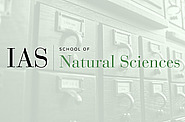Joint IAS Princeton University Astrophysics Colloquium
Oct
11
2016
Institute for Advanced Study/Princeton University Joint Astrophysics Colloquium
Challenging Einstein: Lunar Laser Ranging as an Absolute Test
Tom Murphy
11:00am|Bloomberg Hall Lecture Hall
Oct
04
2016
Institute for Advanced Study/Princeton University Joint Astrophysics Colloquium
Frontiers of Radiative Plasma Astrophysics: Powering the Brightest Gamma-ray Flares by Relativistic Magnetic Reconnection
Dmitri A. Uzdensky
11:00am|Bloomberg Hall Lecture Hall
Sep
27
2016
Institute for Advanced Study/Princeton University Joint Astrophysics Colloquium
Hydrodynamical Simulations of Galaxy Formation: Progress, pitfalls, and promises
Volker Springel
11:00am|Bloomberg Hall Lecture Hall
Sep
20
2016
Institute for Advanced Study/Princeton University Joint Astrophysics Colloquium
A Single Prolific r-process Event Preserved in an Ultra-faint Dwarf Galaxy
Anna Frebel
11:00am|Bloomberg Hall Lecture Hall
Sep
06
2016
Institute for Advanced Study/Princeton University Joint Astrophysics Colloquium
The Observational Quest for the Earliest Galaxies: Progress and Challenges
Richard Ellis
11:00am|Bloomberg Hall Lecture Hall
May
03
2016
Institute for Advanced Study/Princeton University Joint Astrophysics Colloquium
Investigating the Symmetry, Progenitors, and Particle Acceleration of Supernova Remnants
Laura Lopez
11:00am|Princeton University, Peyton Hall, Room 145
Apr
26
2016
Institute for Advanced Study/Princeton University Joint Astrophysics Colloquium
Moving Mesh Simulations of Binary Black Hole Accretion and Relativistic Jets
11:00am|Princeton University, Peyton Hall, Room 145
Apr
19
2016
Institute for Advanced Study/Princeton University Joint Astrophysics Colloquium
Characteristic Scales in the CGM and IGM
Peng Oh
11:00am|Princeton University, Peyton Hall, Room 145
Apr
12
2016
Institute for Advanced Study/Princeton University Joint Astrophysics Colloquium
The Extreme Energy Cosmic Frontier
Angela Olinto
11:00am|Princeton University, Peyton Hall, Room 145
